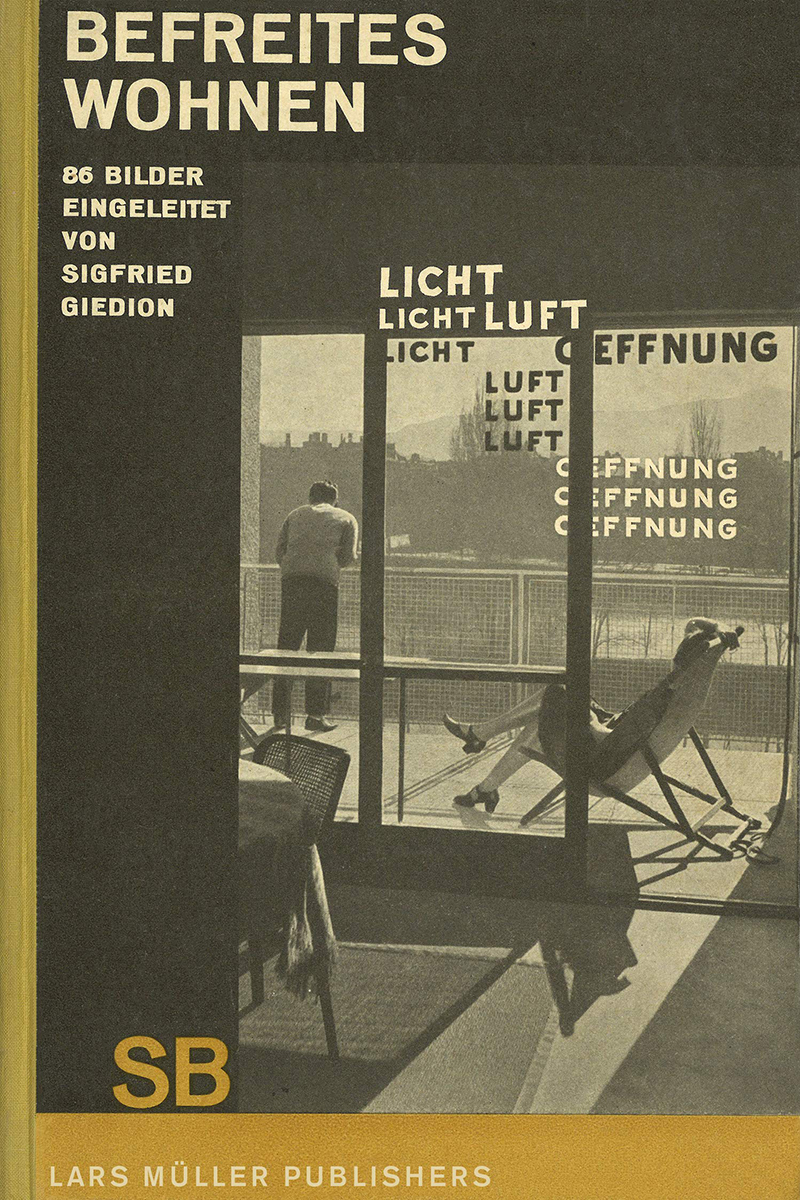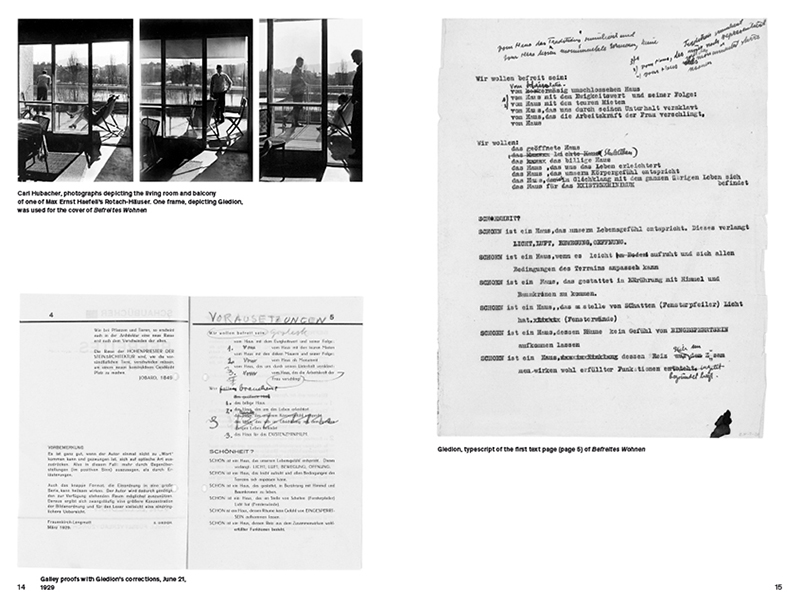Sigfried Giedion
Sigfried Giedion: Liberated Dwelling
Reto Geiser (Editor)
Lars Müller Publishers, January 2019

Hardcover/paperback in two volumes w/transparent slipcase | 5 x 7-1/2 inches | 100/96 pages | 86 illustrations | English/German | ISBN: 978-3037785683 | $40.00
Publisher Description:




Author Bio:
(Note: Books bought via these links send a few cents to this blog, keeping it afloat.)





Reto Geiser (Editor)
Lars Müller Publishers, January 2019

Hardcover/paperback in two volumes w/transparent slipcase | 5 x 7-1/2 inches | 100/96 pages | 86 illustrations | English/German | ISBN: 978-3037785683 | $40.00
Publisher Description:
Sigfried Giedion’s small, but vocal manifesto Befreites Wohnen (1929) is an early manifestation of modernist housing ideology and as such key to the broader understanding of the ambitions of the International Congresses of Modern Architecture (CIAM) and the debate on the industrialization of construction processes and its impact on public housing at the beginning of the twentieth century. An important step in Giedion’s rise as one of the foremost propagators of modern architecture, this manifesto is based on the argumentative power of visual comparisons, and the only book the art historian both authored and designed.dDAB Commentary:
The German facsimile edition of Giedion’s Befreites Wohnen is completed by an English translation and a scholarly essay that anchors the work in the context of its time and suggests the book’s relevance for contemporary architectural discourse.
One of the many things I learned when reading Reto Geiser's excellent Giedion and America was that the Swiss, German-speaking Sigried Giedion wrote his most famous work, Space, Time and Architecture, in English. In fact, the German translation followed much later than the 1941 first edition, the opposite of his earlier books, which were written in German then translated into English decades later. Bauen in Frankreich, Bauen in Eisen, Bauen in Eisenbeton, for instance, was published in 1928 but wasn't translated into English, as Building in France, Building in Iron, Building in Ferroconcrete, until 1995. Likewise, Befreites Wohnen, from 1929, is just now hitting the shelves in English, courtesy of Lars Müller Publishers and Geiser, who edited Sigfried Giedion: Liberated Dwelling and translated the original with Rachel Julia Engler. The "facsimile edition" consists of the original German text with illustrations in a handsome hardcover accompanied by a paperback with the text in English (keyed to the original through thumbnails of the spreads) and an informative introduction by Geiser.Spreads:
Geiser's long introduction (I think it has more words than Giedion's book) illuminates a few significant things that make the translation of Befreites Wohnen 90 years later worthwhile. For Giedion, the book was a quickly written "punchy manifesto" for the modern architecture he had recently embraced and first promoted one year before with Bauen in Frankreich (before those two books, he was an art historian interested in the past). As part of a series of compact books for publisher Orell Füssli, the book was geared to a larger, lay audience rather than to architects or design scholars, as in all of Giedion's other books. And focused on housing — specifically on how modern design and technology could provide affordable dwellings with lots of light (licht), air (luft), and openness (oeffnung) — the book still resonates today, when many cities and countries face crises of affordable housing. Furthermore, as Geiser brings up in his introduction, the construction advances being explored in Giedion's time (prefabrication, mainly) are still being worked out close to a century later. Although the original is a historical document, its translation reveals how much work still needs to be done, especially with educating a wider audience about the benefits of modern solutions for affordable housing.




Author Bio:
Sigfried Giedion (1888–1968) was born in Prague on April 14, 1888, a son of Swiss textile entrepreneurs. ... In 1931, He was appointed Charles Eliot Norton Professor in Poetry at Harvard University for the academic year 1938–39. The collected lectures were published as Space, Time and Architecture in 1941. ... Giedion was a prolific writer and authored more than ten monographs in a half dozen languages. On April 9, 1968, he died in Zurich.Purchase Links:
(Note: Books bought via these links send a few cents to this blog, keeping it afloat.)




